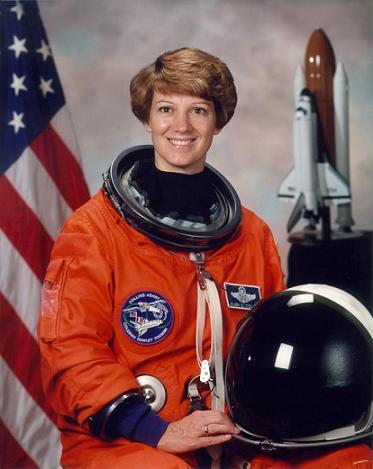The commander of the next shuttle flight, Eileen Collins, does not yet know when she will fly or what additional training will be required of her and her crew.

The commander of the next shuttle flight, Eileen Collins, does not yet know when she will fly or what additional training will be required of her and her crew, but she says that they will be ready to lead the first flight after the Columbia disaster according to plans now in September 2004, but almost certainly - in early 2005. The engineering and organizational things we are doing are very difficult, but I am sure we will reach the resumption of flights" said Collins.
In several areas, NASA has made great progress. On board the planes that simulate the lack of gravity for several short periods of 25 seconds each, and which are known as "Vomit Comet" NASA is updating the training program to also teach repairing damaged insulation tiles in space, using everything from a gun with rubber to plug the holes specially prepared for the shuttle to a paint brush at the price of 25 cents.
In an interview with CNN, Collins was asked if astronauts would need to make such repairs in space, to repair damages like those that caused the Columbia disaster, would they be successful? To this Collins replied: "I think it can be done and I still need further training to make it safer and easier to operate. But at the moment I think this is a very good solution."
NASA engineers also believe that a good solution is to reduce the risk of the foam falling on the spacecraft from the external tank during the launch, which caused a malfunction in the Columbia wing. The proposed solution: remove the foam from areas with a high risk of falling - those where the shuttle connects to the tank, and use heaters to prevent ice build-up, but such changes bring new concerns to the new director of the shuttle program, Bill Parsons.
"When we make changes to any process on the shuttle, we need to understand what the consequences of these changes will be on all the vehicles, so that we do not create a new danger," said Parsons. Remember, the foam that hit the carbon panel on Columbia's left wing during launch caused a fatal crack in the heat shield.
NASA is considering several ideas for repairs in orbit: a flexible cover, a balloon to fill gaps behind the panels, and an adhesive patch as well as an umbrella-like plug to fill holes. The ideas are new and the engineering team is still testing them.
"We have good days and we have bad days, and when things don't go as planned, we have to take a step back and assess the damage, especially when our friends have been taken from us." Parsons said.
As it now turns out, fixing the falling foam problem or replacing tiles or even panels in space may be easy tasks for NASA, at least compared to the dire recommendation of the investigative committee's report - that NASA cannot return to flying until it changes its culture.
The investigation committee concluded that the ferry managers were not attentive to their men, and that they ignored warnings from mid-level engineers. NASA insists that they will clearly listen to all these things. "As commander I tell my astronauts that we will have to listen. When people speak to us, we must listen."
Collins concluded.
Return to flight cost: 235 million dollars
And on the same subject: the news site for space industry issues space.com this week delivers in a news flash that the cost of the operations approved by NASA so far in response to the recommendations of the investigative committee for the return to flight - 235 million dollars. These are eight recommendations that have been approved so far, and this amount does not include requirements that have not yet been approved by NASA and have not been submitted to the investigative committee for approval.
NASA said in a report published on November 20 that these are studies, engineering operations, implementation development and technical changes. The amount does not yet include a re-examination of operations done by subcontractors and independent analyses, NASA said.
Astronaut families from "Columbia" in Israel
14.3.2004
Rona Ramon, the wife of the late Israeli astronaut Ilan Ramon, and her children will arrive in Israel today, along with the other families of the Columbia space shuttle crew. The expedition is also accompanied by two active astronauts from the American Space Agency (NASA). The Minister of Science, who is in charge of the Israeli Space Agency, invited the families to Israel. During the visit, the family members will tour throughout Israel and, among other things, the places where Ilan Ramon lived, grew up, studied and sang.
